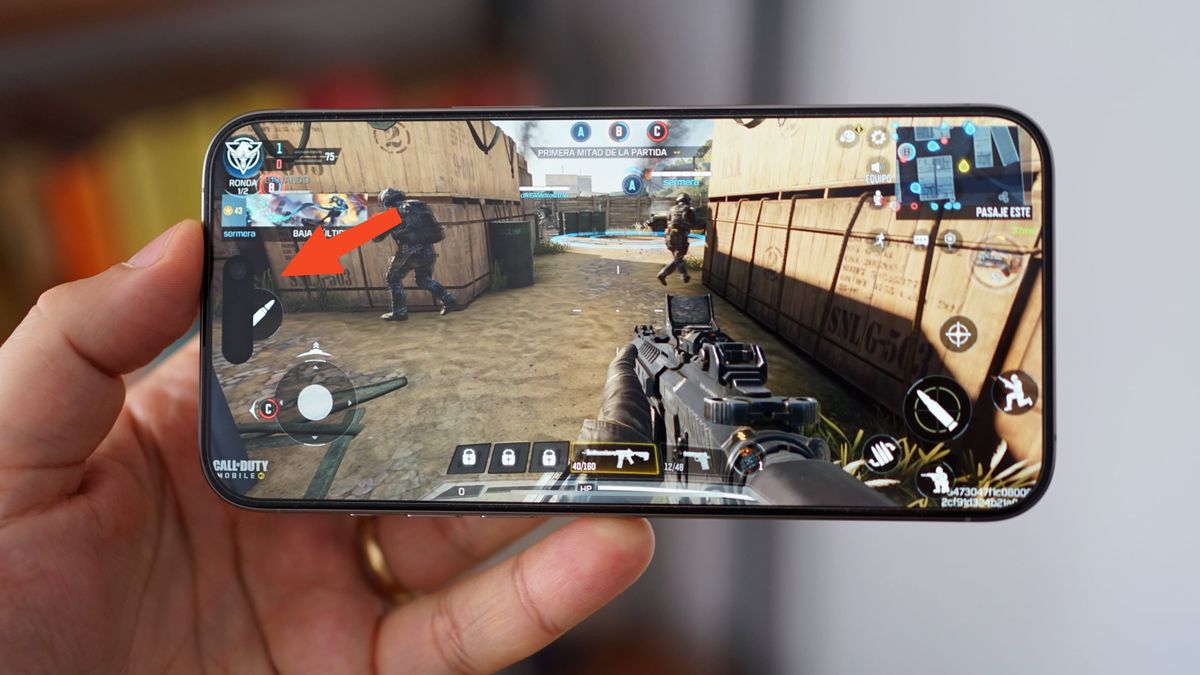Samsung will improve the battery of the iPhone 18 with this new material for OLED screens

Samsung Display and its tireless search for improvements in the battery life of mobile phones has led it to announce a new proposal. This novelty involves the incorporation of blue phosphorescent material in its OLED screens, promising not only great energy efficiency, but also improved performance.
As they explain, they are collaborating with Tsinghua University and Cernet Corporation and although this novelty may not see the light of day until the launch of the iPhone 18 series in 2026, its impact on battery life could mark a before and after .
OLED technology has proven to be fundamental in the quality of mobile screens, but its energy efficiency has often been relegated to the background.
Currently, the red and green phosphorescent materials in OLED screens have an internal luminous efficiency of 100%, while the blue color, essential for the full representation of the spectrumuses fluorescent materials with an efficiency of 25%.
Achieving the right balance between RGB components is essential to delivering a high-quality visual experience, so improving blue efficiency clearly contributes to this balance. Furthermore, historically, The emission efficiency of blue has been more complicated to achieve compared to other colors.
Fluorescence and phosphorescence, what does each concept mean and what implications do they have on OLED screens?
As you can see, Two concepts are mentioned here: fluorescent and phosphorescent. This is the difference between these two materials in the context of OLED screens:
Fluorescence
- How it works?: In fluorescence, the material absorbs the energy of the incident light and re-emits it almost immediately.
- Duration: This process is short-lived and light emission ceases quickly when the excitation source is turned off.
- Efficiency: it has an internal luminous efficiency of 100%, that is, all the energy absorbed is converted into light.
Phosphorescence
- How does it work?: In phosphorescence, the material absorbs the energy of the incident light and releases it in a delayed manner, after a time.
- Duration: This process is of longer duration, and light emission can continue after the excitation source is turned off.
- Efficiency: It has a lower internal luminous efficiency than fluorescence, commonly around 25%.
Regarding its application to OLED screens, in current ones (fluorescence), the materials are used for red and green pixels. These emit light immediately when excited, contributing to the formation of colors on the screen.
Samsung Display’s proposal involves incorporating blue phosphorescent material. Although it has a shorter lifespan compared to the current blue fluorescent material, it seeks to reduce energy consumption. Since it emits light in a delayed manner, it can contribute to lower energy consumption on the OLED screen.
Expectations indicate that this novelty will arrive with the iPhone 18 in 2026
Daejeong Yoon, deputy director of Research at the UBI, reveals that Samsung is in full development of the blue phosphorescent material. Although this new component has a useful life of 55% compared to the material currently used, expected to be implemented from the second half of 2025.
This change was initially planned for Samsung’s foldable smartphone series in 2024, but the development seems to have encountered some problems along the way. However, Samsung Display remains committed to improving luminous efficiency by more than 65% compared to current materialspaving the way for the future of OLED displays.
Despite the initial setbacks in the development of the blue phosphorescent material, the technology industry is looking forward to the impact this innovation will have on the next generation of mobile phones.
With the M14 and M15 material sets predicted to be implemented in the iPhone 16 and 17 lineup respectively, the question arises as to when exactly the benefit of this advancement will be seen in iPhone models. Yes ok expectations point towards the iPhone 18 in 2026technology often surprises with unexpected advances, so we will have to wait.



